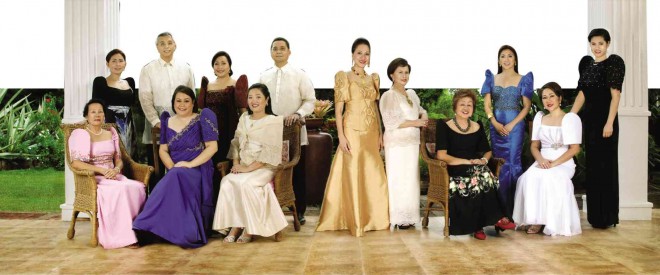Hijos de Davao: Beyond ballroom walls
In a place dubbed a melting pot of culture, a group of settlers embraced change but sought to preserve their own.
“In order for us to hold on to our identity, we should preserve our culture,” said Hijos de Davao president Jackie Garcia Dizon.
For Marissa Tionko, her group has grown alongside Davao City in the past 50 years. “Hijos de Davao is more than just a social club. It is an organization working in a movement for social change,” she said.
Davao City is hailed as the most populous city in Mindanao and the largest in the country. Its land area of 2,444 square kilometers is home to over 1.4 million residents.
But only seven percent of the population, or 89,000, are Davaoeños or descendants of the original settlers. At least 33 percent or 381,000 of the people in Davao are Cebuanos.
Article continues after this advertisementThe ever-increasing diversity of peoples and decreasing number of Davaoeños are the main reasons Hijos de Davao was brought into existence. It was founded in 1964 as a sociocivic organization to nurture relationships among Davaoeños. It primarily aims to gather the remaining Davaoeños residing in the city to celebrate the feast of St. Peter every 29th day of June.
Article continues after this advertisement“The objectives of Hijos de Davao are to preserve culture and traditions and nurture relationships among them,” Dizon said.
Their existence was seen as “a symbol of unity” in a city overpopulated by migrants. For the Hijos, the old Davao was “whole and undivided.” Thus in the present-day Davao, “Hijos is a semblance of identity in this scattered society,” Tionko said.
It was during the American rule in the late 19th century that more settlers came to Davao, according to the book “Reconstructing History from Text and Memory” by Macario Tiu.
Many migrants were lured by the prosperity offered by Davao’s wide and fertile lands. Its wide abaca and coconut plantations enticed many to come and settle in the city.
World War II veteran Casimero Flores, a 98-year-old migrant from Aklan, came to Davao in 1945 after hearing stories about Mindanao’s fertile land and abundant food that enticed many, like him, to migrate.
“Aklan back then was a difficult place to live in because food was scarce. When the drought came, we had nothing. They (locals) said that in Mindanao, there was plenty of food, especially bananas. My parents, brothers and sisters, we were all starving, so I grabbed the chance to go to Davao,” he said.
Flores acquired a 10-hectare lot in Cotabato, four hectares in Sto. Tomas, Davao del Norte, and 10 hectares in Davao City. He is now left with 9.1 hectares of land in Davao as he gave the others away to his relatives.
“I wanted them to start a good life. For that, they needed land to till,” he said.
Most of his family, even cousins and aunts, came to reside in Mindanao.
The diversity of race and cultures is among the things that set Davao apart from others. But over time, the mix of cultures made it hard for Davaoeños to distinguish their own.
This sentiment was mirrored by the third generation descendants of Davao’s first Christian settlers of 1848. Among them were Arzenio Suazo and his brother Amadeo, Isidro Bastida, Pantaleon Pelayo Sr. and Ruperto Lizada, who were the forerunners of the Hijos de Mindanao in the late 1920s.
Many other similar organizations sprouted after Hijos de Mindanao, such as the Hijos de Mindanao y Sulu, Tayo-Tayo, and Club Dabawenyo. Their unifying characteristic was that they all gathered and celebrated the feast of Davao’s patron saint, St. Peter.
The clubs were also the foundations that set Hijos de Davao into existence in 1964, founded by Emilio Palma Gil, its first president.
Among its projects, as cited in the book “Davao: Its History and Progress” by Gloria Dabay, were the Osmeña Park, the Generoso Bridge in Bankerohan, the Bagobo statue at the Davao International Airport, and the Hijos de Davao Cultural and Educational Foundation Inc., a nonstock, nonprofit group which seeks to launch programs “dedicated to the promotion, enhancement, preservation, and projection of the cultural heritage of Davao and the educational and social improvement of Dabawenyos.”
